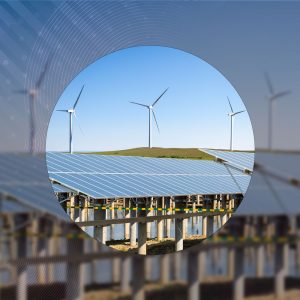Harvesting the Future: Exploring the Latest in Renewable Energy


In an era marked by environmental concerns and the urgent need to mitigate climate change, the spotlight on renewable energy has never been more intense. As traditional energy sources contribute to the depletion of finite resources and the emission of greenhouse gases, the quest for sustainable alternatives has become paramount. This article delves into the latest advancements in renewable energy, examining how cutting-edge technologies are shaping the future of power generation.
Solar Power Revolution
One of the frontrunners in the renewable energy race is solar power. With advancements in photovoltaic technology, solar panels have become more efficient and cost-effective. The integration of solar farms and rooftop installations has seen a significant upswing, contributing to a substantial increase in the global solar energy capacity. Innovations such as transparent solar panels and paint are pushing the boundaries, allowing solar power to be harnessed in unconventional ways.
Wind Energy Innovations
Wind energy, another stalwart in the renewable energy sector, continues to evolve. Offshore wind farms, characterized by higher wind speeds and minimal land use, are gaining prominence. Additionally, advancements in turbine technology, such as vertical-axis turbines and bladeless designs, promise increased efficiency and reduced environmental impact. The marriage of artificial intelligence with wind farms for predictive maintenance. Optimal energy production is a testament to the ongoing technological revolution in this sector.
Tapping into Tides and Currents
Harnessing the power of tides and ocean currents is an emerging frontier in renewable energy. Tidal and wave energy technologies are being developed to provide a consistent and reliable power source. Underwater turbines, tidal lagoons, and wave energy converters are among the innovative solutions being explored. As these technologies mature, they hold the potential to become significant contributors to the global renewable energy mix, especially in coastal regions.
Geothermal Energy Resurgence
Geothermal energy, often overshadowed by its more visible counterparts, is experiencing a renaissance. Enhanced geothermal systems, where reservoirs of hot water or steam are created underground, expand the reach of geothermal power. Using abandoned oil and gas wells for geothermal energy extraction is a prime example of repurposing existing infrastructure for sustainable energy production. As research and investments in geothermal energy escalate, it could emerge as a reliable and constant power source.
Breakthroughs in Biomass and Bioenergy
The potential of biomass and bioenergy as renewable resources is undergoing a metamorphosis. Advanced biofuels derived from algae, waste, and other organic materials are gaining traction as cleaner alternatives to traditional fossil fuels. Furthermore, the development of bioenergy with carbon capture and storage (BECCS) provides energy and aids in reducing atmospheric carbon dioxide levels. This dual-purpose approach showcases the versatility of bioenergy in the broader context of sustainable development.
Energy Storage Solutions
The intermittent nature of many renewable energy sources underscores the critical need for effective energy storage solutions. Advancements in battery technologies, including lithium-ion, solid-state, and flow batteries, enhance energy storage capacities and overall efficiency. Grid-scale energy storage systems are emerging as crucial components in stabilizing power supply and facilitating the integration of renewable energy into existing electrical grids.
The Role of Artificial Intelligence
Artificial intelligence (AI) is becoming a game-changer in the renewable energy landscape. Machine learning algorithms optimize energy production, predict failures, and enhance oenhancestem efficiency. Smart grids, enabled by AI, facilitate real-time monitoring and adaptive management of energy distribution. The synergy between renewable energy and artificial intelligence unlocks new possibilities for a sustainable and intelligent future.
Policy and Investment Dynamics
Transitioning to a renewable energy-dominated future requires a supportive policy framework and substantial investments. Governments worldwide increasingly adopt policies that incentivize it adoption and penalize carbon-intensive practices. Investment in research and development, coupled with subsidies for renewable projects. Creates an environment conducive to innovation and growth in this sector.
Challenges and Future Prospects
Despite the strides in renewable energy, challenges persist. Energy storage breakthroughs, the scalability of specific technologies, and the need for widespread infrastructure updates are hurdles that demand attention. However, with the collective efforts of governments, businesses, and the scientific community, the future of renewable energy appears promising. Continued innovation and strategic policy initiatives will propel the world towards a more sustainable and resilient energy landscape.
The latest developments in renewable energy signify a monumental shift towards a cleaner, more sustainable future. Each facet of the renewable energy spectrum is witnessing unprecedented advancements, from solar and wind power to geothermal and tidal energy. As we harness the power of innovation and supportive policies and investments, the dream of a renewable energy-powered world is becoming an achievable reality. The journey towards harvesting the future has begun, and the possibilities are as boundless as the energy sources we seek to exploit for the well-being of our planet.
